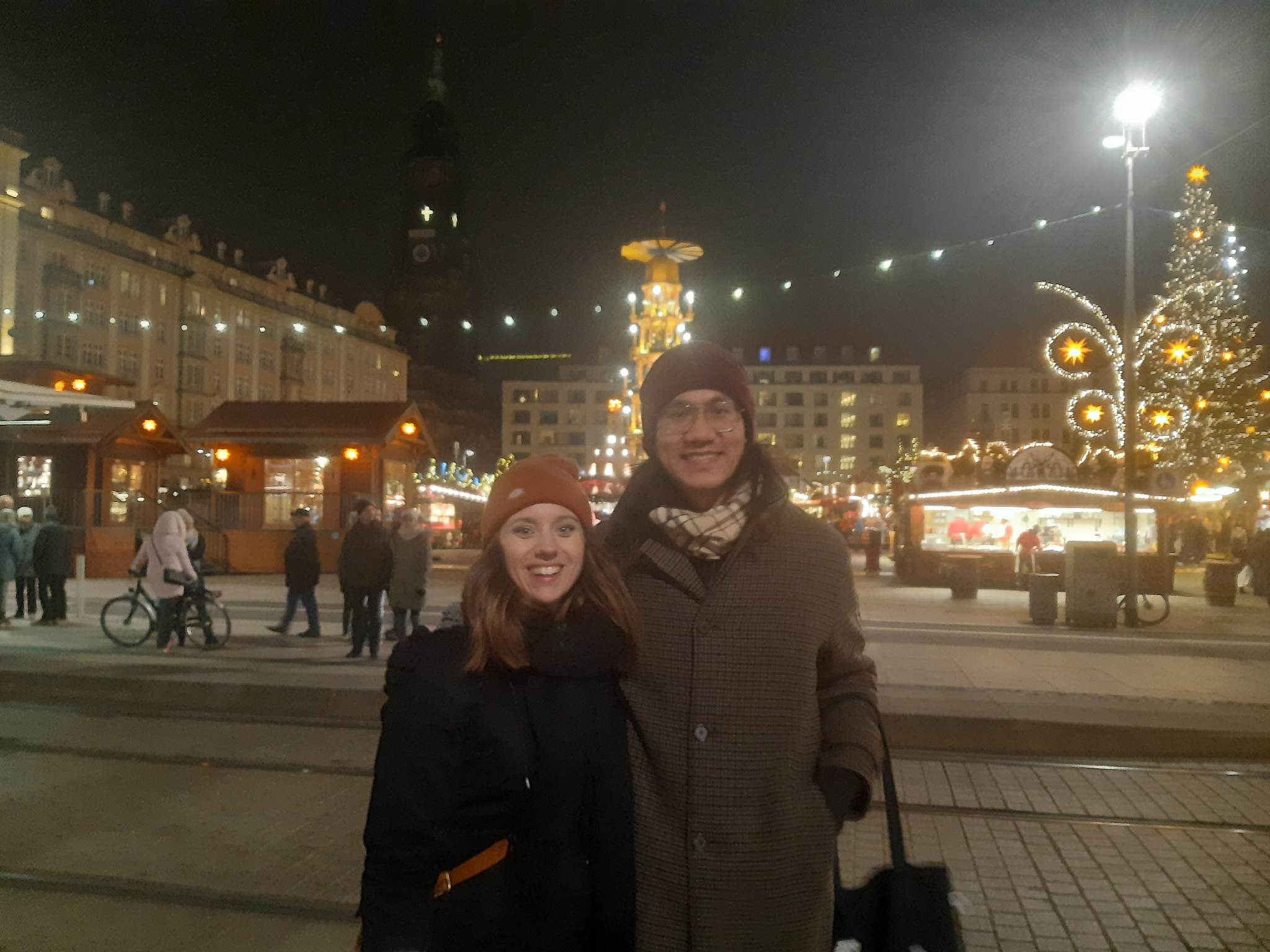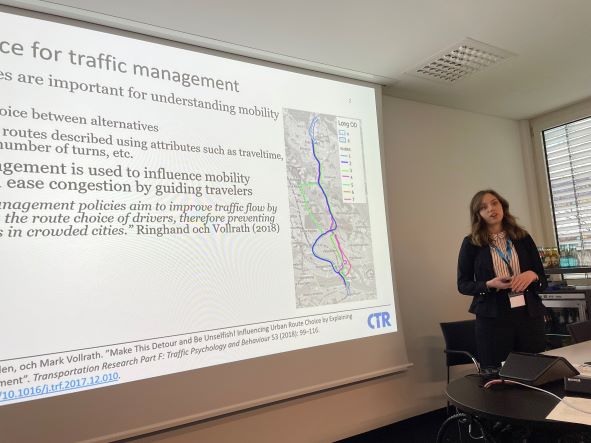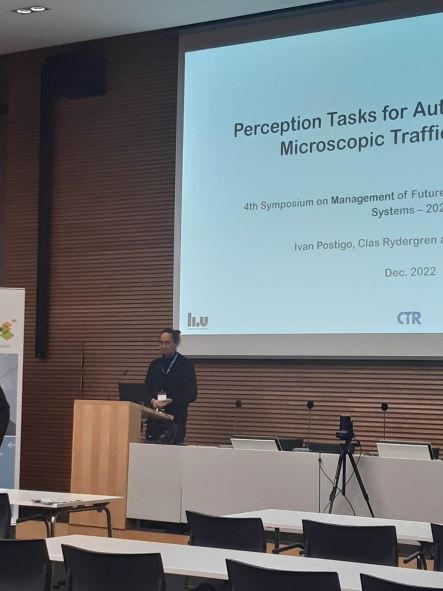Greetings from Dresden!

In December Anna Danielsson and Ivan Postigo participated at the MFTS Symposium at Dresden University of Technology - and took the opportunity to visit the Christmas market
The 4th Symposium on Management of Future Motorway and Urban Traffic Systems 2022 (MFTS2022) took place from 30 November to 2 December 2022 in Dresden, Germany.
PhD students Anna Danielsson and Ivan Postigo from Linköping University participated with a presentation on their current projects. Read below an abstract of their presentations and find more information on our website.
Abstract from Anna Danielssons presentation on Multimodal Traffic Management MMTL:

Efficient traffic management requires an understanding of mobility patterns in the road network, where one important component is route choices. The aim of this study is to analyze how traffic models (i.e. route choice models) can be used for efficient road traffic management, by identifying key attributes explaining the route choice observed in data. With a route choice model that can handle changes in the network in case of an incident, the most affected travelers can be identified, and relevant traveler information and control actions can be given.
The data set used consisted of about 600,000 vehicle trips and was divided into a training dataset and a test dataset. The two datasets were compared, and experiments show that the routes used are similar. Discrete route choice models were estimated with a route set of observed routes in the training data. The result suggests that the included attributes seem to be sufficient to estimate the route choices of the training data. Furthermore, travel time and simplicity of the route seem to be important attributes for the route choice.
Läs mer om Multimodal Trafikledning (MMTL).
Abstract from Ivan Postigos presentation on Smart 3 - Simulation and modeling of automated road transport:

A challenge for modeling automated driving in microscopic traffic simulations has been to include the factors that determine how automated driving affects the traffic flow dynamics. In mixed traffic conditions where automated and human-driven vehicles interact with one another, microscopic driving models should capture the essential characteristics and differences between automated and human driving. An essential difference is how the perception tasks are performed. The perception tasks involve the sensing and understanding of other vehicles and elements present on the road. Automated vehicles perceive these elements through on-board sensors, connectivity features and recognition software while human drivers perceive them through their senses and cognitive processes.
In this work a conceptual model dealing with the perception tasks in microscopic traffic simulation is proposed. The model focuses on automated driving and aims to capture performance differences between sensor-based perception, perception based on connectivity, and human perception. The perception performance is represented by the range, accuracy, and delay associated with each type of perception. By dealing with the perception tasks exclusively, the model ensures consistency in both in the modeling of the perception and in the perceived surroundings. The model allows more transparency about the assumptions needed when investigating automated driving using microscopic traffic simulation.
Read more about SMART3 - Simulation and modeling of automated road transport, part 3.



